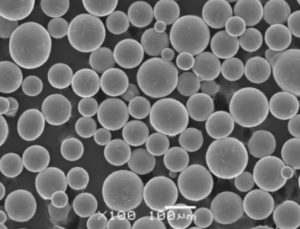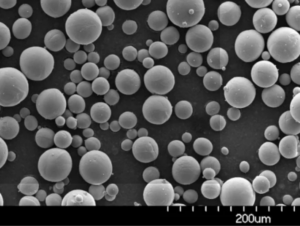ガス噴霧 SF小説の世界のように聞こえるかもしれないが、実は金属粉の生産に革命をもたらす最先端技術なのだ。熟練のエンジニア、好奇心旺盛な学生、あるいは単に高度な製造技術に強い関心を持つ人など、このガイドはあなたのためのものです。このガイドでは、ガスアトマイズのプロセスからその応用例まで、あらゆる角度から深く掘り下げていきます。準備はいいですか?さあ、始めましょう!
概要 ガス噴霧
ガスアトマイズは、微細な金属粉末を製造するために使用されるプロセスです。高圧ガスを用いて溶融金属を微小な液滴に分解し、それを凝固させて微粉末にするこの技術は、他の方法にはない精度と制御性を提供する。これらの粉末は、その優れた特性と均一性により、航空宇宙、自動車、さらには医療を含む様々な産業にとって極めて重要である。
ガスアトマイゼーションの主な詳細:
- プロセス 高圧ガスによる溶融金属の分解
- 出力: 微細な球状金属粉
- アプリケーション 航空宇宙、自動車、積層造形、製薬
- メリット 高純度、制御された粒子径、球形状
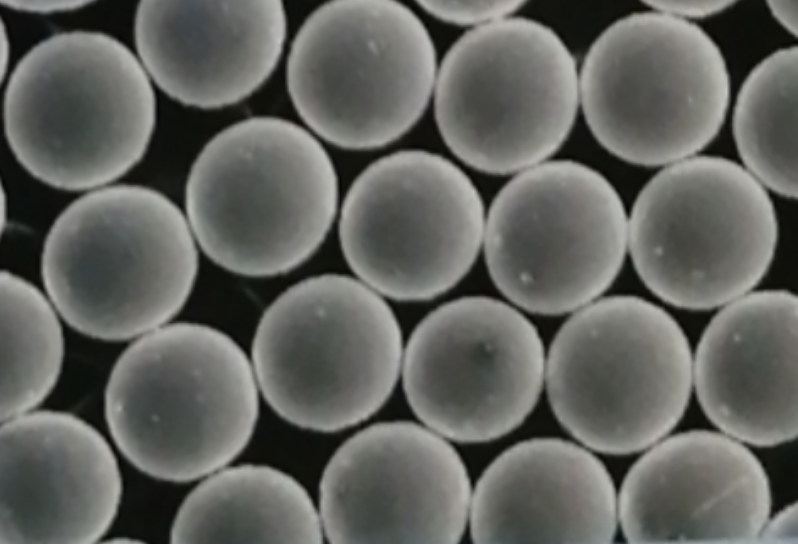
ガスアトマイズ金属粉末の種類と組成
ガスアトマイズによって製造される金属粉末のうち、最も一般的に使用されるものをいくつかご紹介しましょう。それぞれのタイプには独自の特性と用途があります。
| 金属粉 | 構成 | プロパティ | 用途 |
|---|---|---|---|
| アルミニウム合金 | Al、Mg、Si、Cu | 軽量、耐腐食性 | 航空宇宙、自動車 |
| ステンレス鋼 | Fe、Cr、Ni、Mo | 高強度、耐食性 | 医療機器、食品加工機器 |
| チタン合金 | Ti、Al、V | 高い強度対重量比、耐食性 | 航空宇宙、医療用インプラント |
| ニッケル合金 | Ni、Cr、Mo、Fe | 耐高温性、耐食性 | タービン、化学処理 |
| 銅合金 | Cu、Zn、Sn | 優れた導電性、耐食性 | 電気部品、熱交換器 |
| コバルトクロム合金 | Co、Cr、Mo | 耐摩耗性、生体適合性 | 医療用インプラント、歯科用途 |
| 工具鋼 | Fe、C、Cr、V、W | 高硬度、耐摩耗性 | 切削工具、金型 |
| 貴金属 | 金、銀、白金 | 高導電性、耐食性 | エレクトロニクス、ジュエリー |
| 高エントロピー合金 | 変動あり | 優れた機械的特性、熱安定性 | 研究、先端エンジニアリング |
| 鉄合金 | Fe、C、Mn、Si | 高強度、磁気特性 | 自動車、建設 |
詳しい説明
アルミニウム合金
ガスアトマイズによって製造されるアルミニウム合金は、軽量で高強度であることで知られている。優れた耐食性と優れた機械的特性により、航空宇宙産業や自動車産業でよく使用されています。
ステンレス鋼
ステンレスパウダーは、その高い強度と耐食性が評価されています。これらの粉末は、衛生性と耐久性が最も重要な医療機器や食品加工機器に不可欠です。
チタン合金
チタン合金は、卓越した強度対重量比を提供し、耐食性に優れているため、航空宇宙用途や医療用インプラントに理想的です。その生体適合性は、医療分野での使用をさらに拡大します。
ニッケル合金
ニッケルベースの粉末は、その高温耐性と耐食性で知られています。これらは、過酷な条件が常態化するタービンエンジンや化学処理産業において極めて重要である。
銅合金
銅合金はその優れた導電性と耐食性で際立っています。電気部品や熱交換器に広く使用され、様々な電子機器や冷却システムで重要な役割を果たしています。
コバルトクロム合金
コバルトクロム合金は耐摩耗性と生体適合性に優れ、医療用インプラントや歯科用途に最適です。耐久性に優れているため、厳しい環境下でも長期にわたって性能を発揮します。
工具鋼
工具鋼は、その高い硬度と耐摩耗性で有名です。これらの特性は、精度と耐久性が重要な切削工具や金型の製造に不可欠です。
貴金属
金、銀、プラチナのような貴金属パウダーは、高い導電性と耐食性を持つ。これらの粉末は電子機器や宝飾品によく使用され、そのユニークな特性が高く評価されている。
高エントロピー合金
高エントロピー合金は、卓越した機械的特性と熱的安定性を持つ新しいタイプの材料である。高エントロピー合金は、そのユニークな特性が探求されている研究用途や先端工学用途で主に使用されています。
鉄合金
様々なグレードの鋼鉄を含む鉄合金は、その高い強度と磁気特性のために不可欠である。鉄合金は自動車産業や建設産業で広く使用され、無数の構造物や部品の強度と完全性に貢献しています。
ガスアトマイズ金属粉末の用途
ガスアトマイズされた金属粉末は汎用性があり、様々な産業で使用されています。ここでは、これらの粉末がどのような場所で、どのように使用されているかを詳しくご紹介します。
| 産業 | 申し込み | メリット |
|---|---|---|
| 航空宇宙 | タービンブレード、構造部品 | 高強度、軽量、耐食性 |
| 自動車 | エンジン部品、ギア、ベアリング | 耐久性、精度、燃費の向上 |
| メディカル | インプラント、補綴物、手術器具 | 生体適合性、耐食性、高強度 |
| 付加製造 | プロトタイプと部品の3Dプリント | カスタマイズ性、精度、材料効率 |
| エレクトロニクス | 導電性インク、コネクター、ヒートシンク | 高導電性、小型化、熱管理 |
| 工具製造 | 切削工具、金型 | 高硬度、耐摩耗性、高精度 |
| ジュエリー | 高級ジュエリー、装飾品 | 美観、耐食性、高価値 |
| 化学処理 | 触媒、フィルター、反応容器 | 耐食性、高温安定性 |
| 建設 | 構造部品、補強材 | 高強度、耐久性、磁気特性 |
| 研究開発 | 材料科学、先端工学 | ユニークな特性、革新性、実験的応用 |
航空宇宙
航空宇宙分野では、ガスアトマイズ粉末は高性能のタービンブレードや構造部品の製造に不可欠です。その軽量性と高い強度は、航空機や宇宙船の効率性と安全性を保証しています。
自動車
自動車産業は、これらの粉末をエンジン部品、ギア、ベアリングに活用し、耐久性と精度を高めている。その結果、自動車の燃費と性能が向上する。
メディカル
医療用途には、生体適合性と耐食性が重要なインプラント、人工装具、手術器具などが含まれます。これらのパウダーは医療器具の高い強度と寿命を保証します。
付加製造
ガスアトマイズパウダーは3Dプリンティングにおいて極めて重要であり、高精度のカスタムプロトタイプやパーツの作成を可能にします。この技術は、材料効率と革新的なデザインの可能性を可能にします。
エレクトロニクス
エレクトロニクス産業では、これらの粉末は導電性インク、コネクター、ヒートシンクに使用されている。その高い導電性と熱管理能力は、コンパクトで効率的な電子機器の開発を支えている。
工具製造
工具製造は、ガスアトマイズ粉末の高い硬度と耐摩耗性の恩恵を受けています。これらの粉末から作られた切削工具、金型、ダイは、様々な工業プロセスにおいて精度と耐久性を保証します。
ジュエリー
ジュエリー製作において、貴金属パウダーは高級ジュエリーや装飾品を作るために使用されます。その審美的な魅力、耐食性、高い価値は、美しく耐久性のある作品を作るのに理想的です。
化学処理
化学処理産業では、これらの粉末を触媒、フィルター、反応容器に利用している。その耐食性と高温安定性は、効率的で安全な化学反応を保証する。
建設
建築分野では、ガスアトマイズ粉末は構造部品や補強材に使用されている。その高い強度と耐久性は、建物やインフラの完全性と長寿命化に貢献している。
研究開発
研究者やエンジニアは、これらの粉末を使用して新しい材料やアプリケーションを探求しています。ガスアトマイズ粉末のユニークな特性は、材料科学と先端工学における革新と実験の原動力となっています。
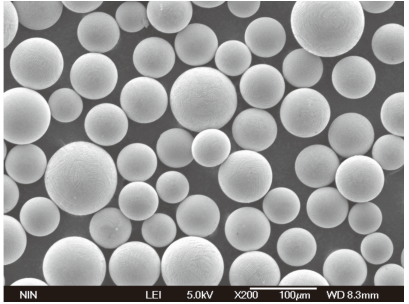
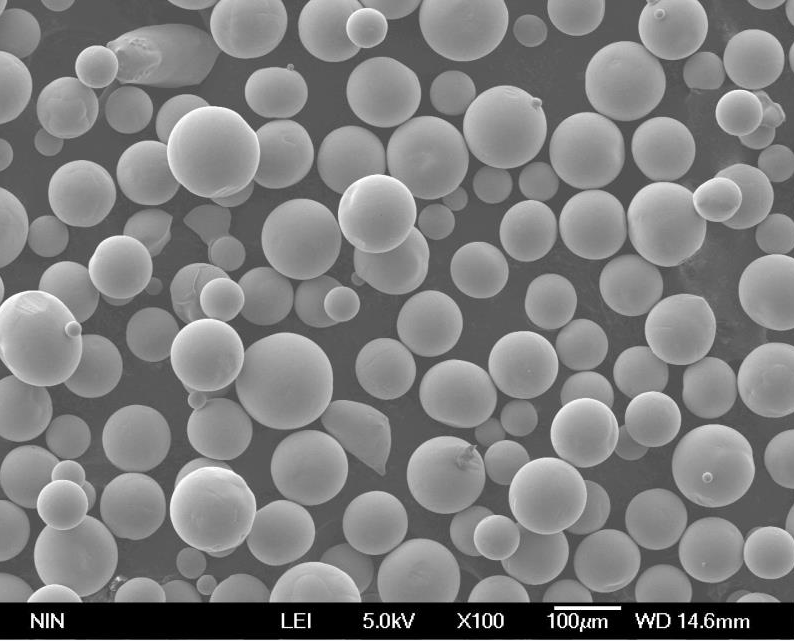
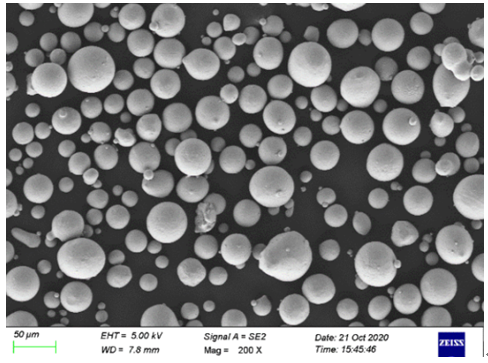
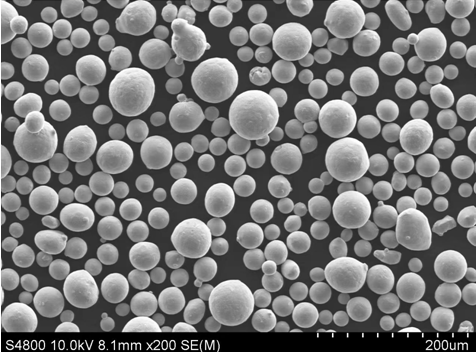
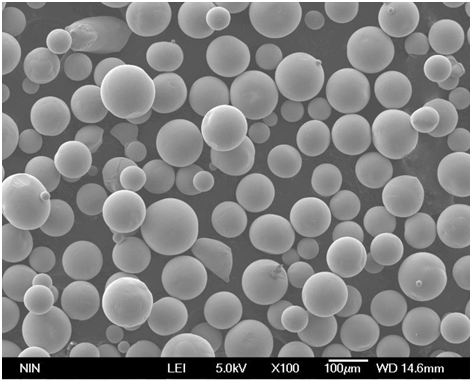
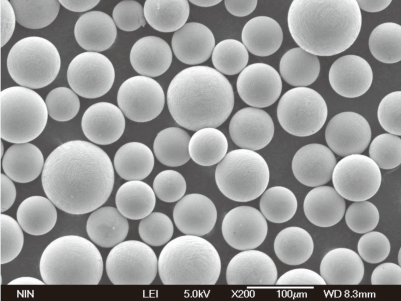
仕様、サイズ、等級、規格
ガスアトマイズされた金属粉末に関しては、考慮すべき様々な仕様、サイズ、等級、規格がある。これらの要素は、様々な用途に対する粉末の適合性を決定します。
| パラメータ | 詳細 |
|---|---|
| 粒子サイズ | 通常、10 µm~150 µm。 |
| 純度 | 99.9%を超える高純度レベル |
| 形状 | 均一な流れと充填密度を実現する球状 |
| グレード | 合金組成と用途によって異なる |
| 規格 | ASTM、ISO、その他の業界固有の規格 |
粒子サイズ
ガスアトマイズ粉末の粒子径は、通常10 µmから150 µmです。この広い範囲により、特定の用途に合わせて粉末をカスタマイズすることができ、最適な性能を確保することができます。
純度
高純度レベルはガスアトマイズ粉末の特徴であり、しばしば99.9%を超える。これにより、粉末は航空宇宙や医療を含む様々な産業の厳しい要件を満たすことができます。
形状
ガスアトマイズ粉末の球状形状は、均一な流動と充填密度を保証します。この特性は、一貫した材料分布が不可欠な積層造形などの用途に極めて重要です。
グレード
合金組成と用途に応じて、さまざまなグレードのパウダーが用意されています。これらのグレードは、粉末が様々な用途の特定の性能基準を満たすことを保証します。
規格
ガスアトマイズ粉末は、ASTMやISOといった業界固有の規格に準拠しなければなりません。これらの規格は、粉体が必要な品質と性能の基準を満たすことを保証します。
サプライヤーと価格詳細
ガスアトムに適したサプライヤーを見つける
粉末は、品質と信頼性を確保するために非常に重要です。以下は、注目すべきサプライヤーのリストとその価格詳細である。
| サプライヤー | 所在地 | 製品紹介 | 価格 |
|---|---|---|---|
| カーペンター・テクノロジー | アメリカ | ステンレス鋼、チタン合金 | 製品と数量によって異なる |
| ヘガネスAB | スウェーデン | 鉄鋼粉 | オーダーメイドのお見積もり |
| GKN粉末冶金 | グローバル | さまざまな金属粉末 | 競争力のある価格設定、一括割引 |
| サンドビック | スウェーデン | ニッケルおよびコバルト合金 | 価格はお問い合わせください。 |
| AP&C(GEアディティブ) | カナダ | チタンおよびアルミニウム合金 | 高純度のプレミアム価格 |
| プラクセア・サーフェス・テクノロジー | アメリカ | 特殊合金 | 仕様に基づく見積もり |
| テクナ・プラズマ・システムズ | カナダ | 球状金属粉 | 粒度と数量に基づく価格 |
| エプソンアトミックス | 日本 | 磁性粉、高性能合金 | 競争力のある価格、ボリュームディスカウント |
| AMETEK 特殊金属製品 | アメリカ | 高純度金属粉 | カスタム見積もり、プレミアム価格 |
| アドバンスド・パウダー&コーティング (AP&C) | カナダ | チタンおよびその他の先端合金 | 価格は様々だが、一般的に精密パウダーは高い |
カーペンター・テクノロジー
米国を拠点とするカーペンター・テクノロジー社は、ステンレスとチタン合金の粉末を幅広く提供しています。価格は製品と数量によって異なり、ご要望に応じて特注のお見積もりも可能です。
ヘガネスAB
Höganäs AB社はスウェーデンの会社で、鉄粉・鋼粉の専門メーカーです。同社は、注文仕様に基づいた特注見積もりを提供し、顧客に合わせたソリューションを保証している。
GKN粉末冶金
グローバルに展開するGKN粉末冶金は、様々な金属粉末を提供しています。競争力のある価格設定とバルクディスカウントを提供し、大規模プロジェクトに人気のある選択肢となっている。
サンドビック
同じくスウェーデンのサンドビック社は、ニッケルとコバルトの合金粉末を供給している。価格は要望に応じて提供され、顧客はニーズに応じた見積もりを受け取ることができる。
AP&C(GEアディティブ)
カナダのGE Additiveの子会社であるAP&Cは、チタンとアルミニウム合金を専門としている。同社は、その優れた品質を反映して、高純度パウダーのプレミアム価格を提供している。
プラクセア・サーフェス・テクノロジー
米国を拠点とするPraxair Surface Technologiesは、さまざまな特殊合金を提供しています。価格については、お客様の具体的な要件に基づいたお見積もりをお約束するため、お問い合わせください。
テクナ・プラズマ・システムズ
カナダのTekna Plasma Systems社は、球状の金属粉末を製造している。同社の価格設定は粒子サイズと数量に基づいており、様々な用途に合わせたカスタマイズ・ソリューションを可能にしている。
エプソンアトミックス
日本企業のエプソンアトミックスは、磁性粉末と高性能合金を提供している。競争力のある価格とボリュームディスカウントを提供し、幅広い顧客に対応している。
AMETEK 特殊金属製品
米国を拠点とするAMETEK Specialty Metal Products社は、高純度の金属粉末を供給しています。カスタム見積もりとプレミアム価格を提供し、要求の厳しい用途に最高品質の製品を保証している。
アドバンスド・パウダー&コーティング (AP&C)
もうひとつのカナダ企業、AP&Cはチタンとその他の先端合金を専門としている。同社の価格設定は様々で、一般的に精密粉末では高い方だが、これは品質へのこだわりを反映している。
の利点と限界 ガス噴霧
ガスアトマイゼーションには多くの利点があるが、いくつかの限界もある。長所と短所を比較して、より明確なイメージを掴もう。
| メリット | 制限事項 |
|---|---|
| 高純度 | 高い生産コスト |
| 制御された粒子径 | エネルギー集約型プロセス |
| 球形 | 特定の金属および合金に限定 |
| 一様分布 | 専門設備が必要 |
| 多彩なアプリケーション | パウダーハンドリングの課題 |
| 高い生産率 | 汚染の可能性 |
メリット
高純度
ガスアトマイズは、しばしば99.9%を超える高純度の粉末を製造する。これは、航空宇宙や医療機器など、不純物のない材料を必要とする用途にとって極めて重要である。
制御された粒子径
このプロセスでは粒子径の精密な制御が可能であり、粉末がさまざまな用途の特定の要件を満たすことを保証する。このレベルの制御は、様々な産業で最適な性能を達成するために不可欠です。
球形
粉末の球状形状は、均一な流動性と充填密度を保証し、これは特に、一貫した材料分布を必要とする積層造形やその他のプロセスに有益である。
一様分布
ガス噴霧化は、粒子の均一な分布をもたらし、最終製品の性能と信頼性を高めます。この均一性は、一貫性が重要な用途に不可欠です。
多彩なアプリケーション
ガスアトマイズ粉末は汎用性が高いため、航空宇宙、自動車、医療、エレクトロニクスなど幅広い用途に適している。
高い生産率
ガスアトマイズは大量の粉体を効率的に生産できるため、工業規模の生産には有効な選択肢となる。
制限事項
高い生産コスト
このプロセスは、必要な設備やエネルギーにかかるコストが高いため、比較的高価である。これは小規模な事業にとっては大きな障壁となる。
エネルギー集約型プロセス
ガス噴霧はエネルギーを大量に消費するため、運転コストや環境負荷の上昇につながる可能性がある。
特定の金属と合金に限る
すべての金属や合金がガスアトマイズで処理できるわけではなく、特定の材料への適用が制限される。
専用機材が必要
このプロセスには特殊な装置が必要で、その取得と維持にはコストがかかる。これは、メーカーによっては制限要因となりうる。
パウダーハンドリングの課題
金属微粉末の取り扱いと保管は、コンタミネーションの可能性や、酸化やその他の問題を防ぐための慎重な管理の必要性から、困難な場合がある。
汚染の可能性
高純度であるにもかかわらず、製造過程では常にコンタミネーションのリスクがある。粉体の品質を維持するためには、管理された環境を確保することが不可欠です。
ガスアトマイズ金属粉の比較:性能と特徴
ガスアトマイズ金属粉末の性能と特徴を比較してみよう。
| 金属粉 | 強さ | 耐食性 | 温度安定性 | 生体適合性 | コスト |
|---|---|---|---|---|---|
| アルミニウム合金 | 高い | 中程度 | 中程度 | 低い | 1.15 |
| ステンレス鋼 | 非常に高い | 高い | 高い | 中程度 | 40 |
| チタン合金 | 非常に高い | 非常に高い | 高い | 高い | 1000 |
| ニッケル合金 | 高い | 非常に高い | 非常に高い | 低い | 53 |
| 銅合金 | 中程度 | 高い | 低い | 低い | 37 |
| コバルトクロム合金 | 高い | 非常に高い | 高い | 高い | 440 |
| 工具鋼 | 非常に高い | 中程度 | 中程度 | 低い | 172 |
| 貴金属 | 中程度 | 非常に高い | 低い | 中程度 | 2400 |
| 高エントロピー合金 | 非常に高い | 高い | 高い | 低い | 3000 |
| 鉄合金 | 高い | 中程度 | 低い | 低い | 30 |
強さ
- アルミニウム合金: 強度が高く、軽量用途に最適。
- ステンレススチール: 非常に強度が高く、厳しい環境に適している。
- チタン合金: 卓越した強度で、航空宇宙および医療用途に最適。
- ニッケル合金: 強度が高く、高温用途に優れている。
- 銅合金: 中程度の強度で、電気部品に適している。
- コバルトクロム合金: 強度が高く、医療用インプラントに最適。
- 工具鋼: 非常に強度が高く、切削工具や金型に不可欠。
- 貴金属: 中程度の強度で、美観と導電性が評価されている。
- 高エントロピー合金: 非常に強度が高く、先端エンジニアリングの新たな用途。
- 鉄合金: 強度が高く、建設および自動車産業で広く使用されている。
耐食性
- アルミニウム合金: 中程度の耐食性で屋外使用に適している。
- ステンレススチール: 耐食性に優れ、過酷な環境に最適。
- チタン合金: 非常に高い耐食性で、医療用や航空宇宙用に最適。
- ニッケル合金: 耐食性が非常に高く、化学処理に最適。
- 銅合金: 高耐食性で、電気および熱交換用途に最適。
- コバルトクロム合金: 耐食性が非常に高く、医療用インプラントに適している。
- 工具鋼: 工具の長寿命化に不可欠な適度な耐食性。
- 貴金属: 耐食性が非常に高く、宝飾品や電子機器に最適。
- 高エントロピー合金: 高い耐食性、過酷な環境下での可能性。
- 鉄合金: 適度な耐食性があり、建築や自動車に適している。
温度安定性
- アルミニウム合金: 中程度の温度安定性で、一般的な用途に適している。
- ステンレススチール: 温度安定性が高く、高熱環境に最適。
- チタン合金: 温度安定性が高く、航空宇宙や高温用途に最適。
- ニッケル合金: タービンエンジンや化学処理に不可欠な非常に高い温度安定性。
- 銅合金: 低温安定性、電気用途に最適。
- コバルトクロム合金: 温度安定性が高く、医療および歯科用途に適している。
- 工具鋼: 切削工具に不可欠な適度な温度安定性。
- 貴金属: 低温安定性、導電性と美観が評価されている。
- 高エントロピー合金: 高温安定性、先端工学における新たな用途。
- 鉄合金: 低温安定性があり、自動車や建築に広く使用されている。
生体適合性
- アルミニウム合金: 生体適合性が低く、医療用インプラントには適さない。
- ステンレススチール: 適度なバイオコム
医療機器に使用される。
- チタン合金: 生体適合性が高く、医療用インプラントに最適。
- ニッケル合金: 生体適合性が低く、高温用途に適している。
- 銅合金: 生体適合性が低く、電気部品に最適。
- コバルトクロム合金: 生体適合性が高く、医療用インプラントに適している。
- 工具鋼: 生体適合性が低く、工業用工具に不可欠。
- 貴金属: 適度な生体適合性があり、電子機器や宝飾品で重宝される。
- 高エントロピー合金: 生体適合性が低く、高度なエンジニアリングの可能性がある。
- 鉄合金: 生体適合性が低く、建築や自動車に広く使用されている。

よくある質問
| 質問 | 回答 |
|---|---|
| ガスアトマイズとは? | ガスアトマイズは、溶融金属を高圧ガスで分解し、微細な金属粉末を製造するプロセスである。 |
| ガスアトマイズド・パウダーの利点は何ですか? | 高純度、制御された粒子径、球状、均一な分布。 |
| ガスアトマイズ粉末を使用する産業は? | 航空宇宙、自動車、医療、積層造形、エレクトロニクス、工具製造、宝飾品、化学加工、建設、研究。 |
| アトマイズできる金属は? | アルミニウム、ステンレス鋼、チタン、ニッケル、銅、コバルトクロム、工具鋼、貴金属、高エントロピー合金、鉄。 |
| ガスアトマイズ粉末は3Dプリンティングでどのように使用されるのですか? | カスタム・プロトタイプやパーツの製作に、正確な制御と一貫性を提供します。 |
| ガスアトマイズの課題は? | 製造コストが高い、エネルギーを大量に消費するプロセス、特定の金属に限定される、特殊な装置が必要、粉末の取り扱いに課題がある、汚染の可能性がある。 |
| ガスアトマイズド・パウダーは他のタイプと比較してどうですか? | これらの製品は、より高い純度、より優れた粒度制御、特定の用途向けの優れた特性を提供する。 |
| ガスアトマイズ粉末はどこで買えますか? | サプライヤーには、カーペンター・テクノロジー、ヘガネスAB、GKN粉末冶金、サンドビック、AP&C(GEアディティブ)、プラクセア・サーフェス・テクノロジーズ、テクナ・プラズマ・システムズ、エプソンアトミックス、AMETEKスペシャリティ・メタル・プロダクツ、アドバンスト・パウダー&コーティング(AP&C)などがある。 |
| ガスアトマイズ粉末はどのような規格に準拠していますか? | ASTMやISOといった業界固有の規格に準拠している。 |
| なぜガスアトマイズ粉体では粒子径が重要なのか? | 粒子径は、さまざまな用途における粉体の性能と適合性に影響し、最適な結果を保証します。 |
結論
ガス噴霧 は、微細な金属粉末を製造するための魅力的で非常に効果的なプロセスである。その用途は、航空宇宙、自動車から医療、エレクトロニクスに至るまで、多くの産業に及んでいる。その難しさにもかかわらず、高純度、制御された粒子径、球形状という利点から、高度な製造において非常に貴重な技術となっています。この分野の専門家であれ、単にこの技術に興味があるだけであれ、ガスアトマイズを理解することで、現代の工学および材料科学における可能性の世界が広がります。
